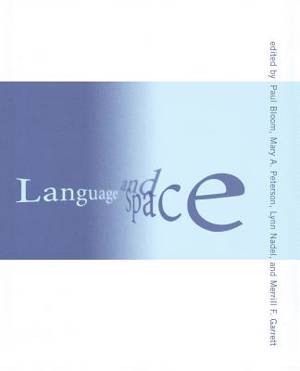
- Afhalen na 1 uur in een winkel met voorraad
- Gratis thuislevering in België vanaf € 30
- Ruim aanbod met 7 miljoen producten
- Afhalen na 1 uur in een winkel met voorraad
- Gratis thuislevering in België vanaf € 30
- Ruim aanbod met 7 miljoen producten
Omschrijving
The fifteen original contributions in Language and Space bring together the major lines of research and the most important theoretical viewpoints in the areas of psychology, linguistics, anthropology, and neuroscience, providing a much needed synthesis across these diverse domains.
The study of the relationship between natural language and spatial cognition has the potential to yield answers to vexing questions about the nature of the mind, language, and culture. The fifteen original contributions in Language and Space bring together the major lines of research and the most important theoretical viewpoints in the areas of psychology, linguistics, anthropology, and neuroscience, providing a much needed synthesis across these diverse domains.
Each chapter gives a clear up-to-date account of a particular research program. Overall, they address such questions as: how does the brain represent space, how many kinds of spatial representations are there, how do we learn to talk about space and what role does culture play in these matters, should experimental tests of the relations between space and language be restricted to closed-class linguistic elements or must the role of open-class elements be considered as well? Throughout authors speak to each other's arguments, laying bare key areas of agreement and disagreement.
Contributors
Manfred Bierwisch, Paul Bloom, Melissa Bowerman, Karen Emmorey, Merrill Garrett, Ray Jackendoff, Philip Johnson-Laird, Barbara Landau, Willem Levelt, Stephen Levinson, Gordon Logan, Jean Mandler, Lynn Nadel, John O'Keefe, Mary Peterson, Daniel Sadler, Tim Shallice, Len Talmy, Barbara Tversky
Specificaties
Betrokkenen
- Uitgeverij:
Inhoud
- Aantal bladzijden:
- 612
- Taal:
- Engels
- Reeks:
Eigenschappen
- Productcode (EAN):
- 9780262522663
- Verschijningsdatum:
- 26/07/1999
- Uitvoering:
- Paperback
- Formaat:
- Trade paperback (VS)
- Afmetingen:
- 178 mm x 229 mm
- Gewicht:
- 1143 g

Alleen bij Standaard Boekhandel
Beoordelingen
We publiceren alleen reviews die voldoen aan de voorwaarden voor reviews. Bekijk onze voorwaarden voor reviews.










